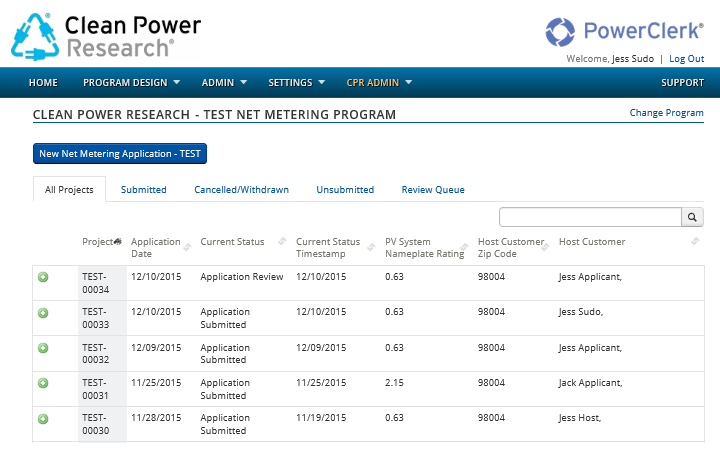Administrating an interconnection or incentive program can be challenging, especially when it comes to keeping track of all the data. With multiple systems-of-record, program administrators can be forced to search through emails, paper documents, document management systems, legacy databases, file shares and more to find information for a single project.
Dispersion of project information wastes time and effort, but also causes a flood of missed opportunities. Consolidating a program’s application data allows these opportunities to present themselves, and empowers valuable processes outside of application record keeping.
Leveraging data to empower utility administration
The data stored in an online system-of-record can have tremendous value, particularly when used to power other processes. The following are examples of ways in which interconnection program data can be leveraged by a utility.
- With penetration of solar increasing year over year, utilities can use an online system-of-record like PowerClerk® to provide continuous updates on installed fleets for reporting or modeling purposes. In particular, this can enable forward-thinking analyses such as forecasting the impact of the growing solar presence on a utility’s or independent system operator’s grid.
- Capturing specific customer information in an online system-of-record can power targeted interactions with customers and intelligence around where systems are being installed (or not installed) within a service territory. This information could be used to:
- Conduct program marketing such as community solar promotion to customers who live in apartments, do not own their homes or who have shaded rooftops.
- Provide information about program participation and potential benefits to customers via an online portal. This could include a map of installed PV (photovoltaic) systems near a customer’s home address, and/or the average cost or system size in their area.
- Automate technical distribution analyses by programmatically exchanging proposed PV system data with distribution planning software as well as screening results.
- Consolidating utility program application data in one online system-of-record streamlines common and uncommon program administrator tasks to:
- Reduce the number of systems an administrator has to reference, which increases efficiency in daily work.
- Facilitate tracking of all project changes, making the program auditable by government bodies and other auditors.
- Enable reporting of program data and performance to the public.
Data Management in PowerClerk
PowerClerk is designed to store all data associated with a project in an easy-to-use, online format for administrators and applicants. Everything submitted in reference to a PowerClerk project is stored and tracked through various features:
- Data fields filled out in PowerClerk are automatically stored in a codified, reportable database and tied to a project number.
- Attachment fields ensure that supporting documentation is readily available and permanently associated to the project.
- eSignatures can be used to create and store legally binding agreements with applicants.
- Project Data History provides a record of changes to data fields, including who made the changes and when.
- Project Status History shows what statuses a project has been in with timestamps and information on who caused the status change.
- Communications sent to the applicant are stored with the project.
- RESTful Application Programming Interface (API) can be used to pull data from PowerClerk into other utility-owned or -licensed systems such as CRM, ERP, CIS, distribution planning and GIS mapping software.
PowerClerk was designed to be used as a single system-of-record for form-driven workflows. It has many features that facilitate this goal, and the PowerClerk product team will continue to develop features that serve this purpose.

Importing historical project data into PowerClerk
The PowerClerk team is excited to announce a new feature that has been added to our lineup: Historical Project Import. This feature allows program administrators to import applications and customer information from legacy databases into PowerClerk. The imported projects can then be organized in the Workflow, updated by administrators, and reported on—just like any other project in PowerClerk.
We anticipate this tool being of great convenience to PowerClerk customers by further facilitating its use as a system-of-record. Project data that may be stored in old Microsoft Excel Spreadsheets and Access databases can also be integrated into PowerClerk, reducing the number of tools that program administrators have to keep track of.
Intelligence to power the future
Keeping application data in an online system-of-record reduces inefficiencies, saving time and money. It also creates opportunities to leverage the value of program data in new and innovative ways. As technology continues to progress, the number of potential opportunities will similarly grow. Keeping application data in a flexible, online system-of-record is key to making sure program administrators can continue to expand their administrative repertoire.
